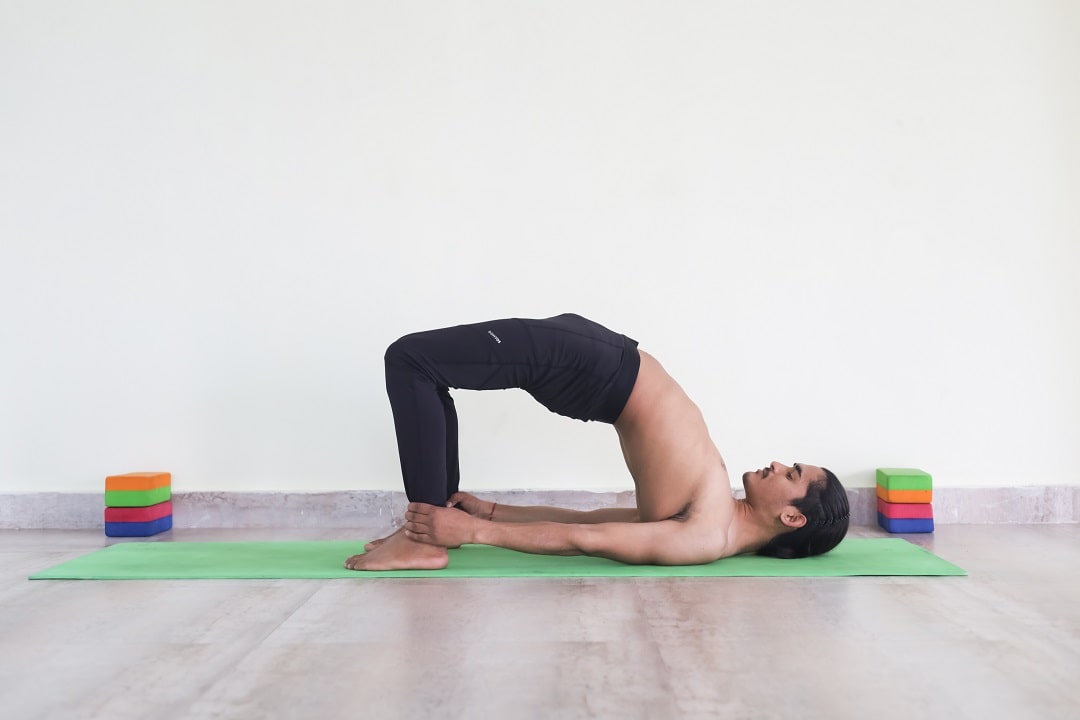
Bridge pose also known as Setu (Bridge) Bandha (Lock) Sarva (All) Anga (limbs) Asana (Posture) is a very commonly used posture in most Yoga classes. This is one of the first back-bending Yoga postures that many new students learn. Also, it is a preparatory posture for the wheel pose. This posture is great in terms of heart opening while ensuring spinal health and strengthening hips.
Table of Contents
How to Do Bridge pose?
- Lie on your back in the supine position
- Bend your knees and bring both heels closer to sitting bones feet flat on the mat and knees facing up
- Keep your legs hip-width distance apart
- Hands straight on the mat fingers facing the hips, palm facing down
- Pressing strongly on the hands, lift the hips off the floor
- Lift the chest off the floor
- Interlace the fingers behind your back making a fist and strongly pushing it towards the feet and opening the chest
- Keep lifting the hips further high
- To intensify the posture, you can lift the heals off the floor and come on the toes so the hips can lift higher
- Stay here for a couple of breath
- Slowly exhale release the fist then drop the hips down and then chest down to the floor
How long should you do the Bridge pose?
Your body should form a straight line from shoulder to hips or even a slight extension of the spine is okay. But the hips should not be lower than the chest which will not provide any benefits of this posture. You can even try to grab your feet with the hands if the body flexibility allows.
- You can choose to stay here for 10-15 breaths or even more to get the benefits of this posture
- Another variation could be to do it dynamically by lifting the hips up, bringing them down, and doing it for a couple of rounds. This can be a good active warm-up.
- If this posture is done as a part of Yin Yoga, then you can hold it for 2-3 mins but with some support of block under the lower back so it becomes more relaxing and less intense.
- To intensify this posture further, lift one leg off the floor pointing straight up, stay there for 10-15 counts, and repeat it from the other side.
Precautions of Bridge Pose : Who should not do the Bridge pose?
What are the Benefits of Bridge Pose?
- Stimulates Thyroid gland: The thyroid gland is situated in the throat area that releases hormones that regulates the body temperature, heart rate and metabolism. As this posture includes taking a throat lock which helps to increase the blood flow towards all the organs in the throat area which includes this gland. This asana is very beneficial for someone who is suffering from hyper or hypothyroidism.
- Relaxes the hip flexors: Hip flexors are usually tight for many due to prolonged sitting as well as doing most of the daily activities in flexed hips. It is essential that one should practice hip extension to relax these muscles to avoid any other issues in the future. This asana helps to relax the hip flexor muscles when the hips are lifting high and away from the ground.
- Encourages spinal extension: This posture is considered a back bend as the thoracic and lumbar spine is extended while lifting the chest and hips up. This helps to strengthen the upper and lower back muscles as well as the glutes. This could be a very good backbend practice for a beginner.
- Improves blood flow: This posture demands your hips be elevated in comparison to the chest, it is a kind of variation that helps to increase the blood flow towards the heart and throat and makes all the organs, joints and muscles healthy and well-functioning
When should you perform Bridge pose?
Get in Touch:
CALL/WHATSAPP +91-8171563333
Website: https://www.vinyasayogaashram.com/
E-MAILvi***************@gm***.com

